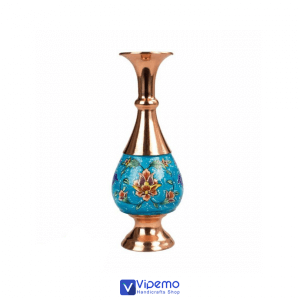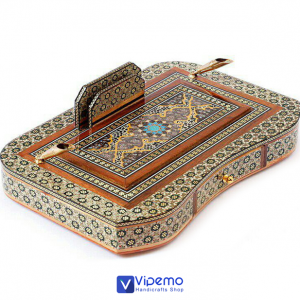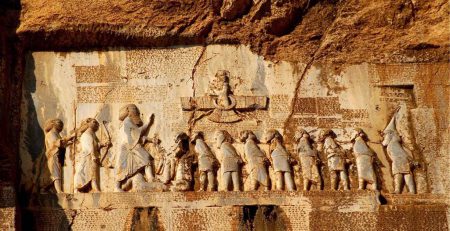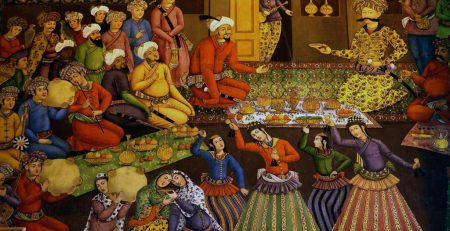
25Dec
Carpets
Mohammad2020-03-31T09:04:42+00:00
By Mohammad Iran, Isfahan, Traveling
33 bridge, 33 pol, Calligraphy, handicraft, handicrafts, iran, Iranian Carpets, iranian handicrafts, isfahan, isfahanApiTag, Mir Emad, Mosque, persian art, Persian Carpets, shiraz, tehran, travel, Vipemo; Carpets
0 Comments
Carpets
While architecture and painting were the main artistic vehicles of the Safavids, the making of textiles and carpets was also of great importance. In the 16th century, hitherto primarily nomadic crafts were transformed into royal industries by the creation of court workshops. The best known carpets of this period, dated 1539. come from the Mausoleum of Sheikh Safi od-Din Safavid in Ardabil and, in the opinion of many experts, represent the summit of achievement in carpet design. The larger of the two is now kept in London’s Victoria and Albert Museum, while the other can be seen at the Los Angeles County Museum.


Persian Carpets
Shah Tahmasb admired carpets so much that he learned weaving techniques and designed several very refined models himself. Under Shah Abbas, the artists developed the use of gold and silver threads in carpets, culminating in the great coronation carpet now held in the. Rosenberg Castle in Copenhagen. As one would expect, the carpets made for Abbas the Great were large in scale and grandiose in design. The “vase” pattern, also called Shah Abbasi, contains great palmettes, huge leaves, flower-strewn meadows, and sometimes animals. The so called “Polonaise” carpets, most of which have found their way to Europe, are enriched with threads of silk, gold covered silver and silver.


The predominantly geometric themes of earlier Iranian carpets were not abandoned entirely but tended to be replaced by the plant, animal, and occasional human themes; medallions and Shah Abbasi flowers are the most usual motifs. The Safavid carpets are also characterized by arabesque tendrils, and margins in colors which contrast with those of the center. Modern Esfahan carpets are characterized by a pale beige or light blue palette.


However, sometimes as many as fifteen colors are used for contrast and outlines, including several different shades of red. Both warp and weft are made of wool and cotton, though silk wefts are also found. Sometimes gold or silver threads are used for small highlights, recalling the early “Polonaise” rugs. Carpets vary in size, though large carpets are quite rare. Modern Esfahan carpets bear mostly the Shah Abbasi designs; patterns are very intricately drawn and precisely executed.
Among other carpets woven in Esfahan are Armani Bafs made by Christian Armenians with the Turkish knot, and Isfahan Mirs, nomads’ carpets from the vicinity of Esfahan, also finely woven with the Turkish knot.

Vipemo Products
-
Firooze Koobi, Firooze Koobi, Jug
Sake Jug – Turquoise Inlaying – Size 2
5.00 out of 5€1,524.00€1,200.00Add to cartQuick View -
Candy Dish, Firooze Koobi, Nut Bowl Dish, Sugar/Candy Pot
Candy/Nuts Bowl Dish – Size 7
0 out of 5€1,500.00€1,300.00Add to cartQuick View -
Candy Dish, Firooze Koobi, Nut Bowl Dish, Sugar/Candy Pot
Candy/Nuts Bowl Dish – Size 1
€182.000 out of 5Add to cartQuick View -
-
-
-
-
-




























Leave a Reply